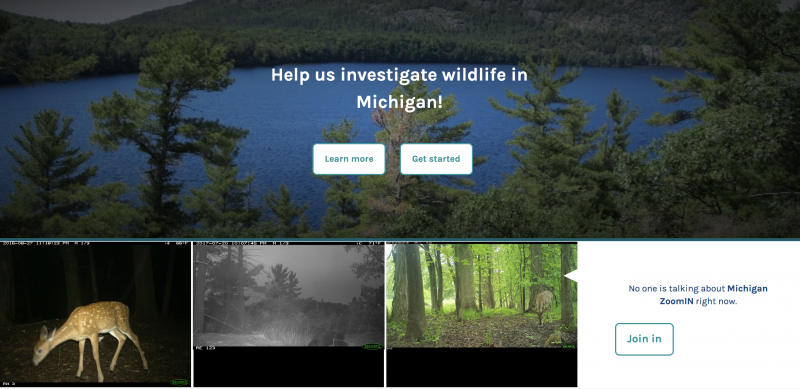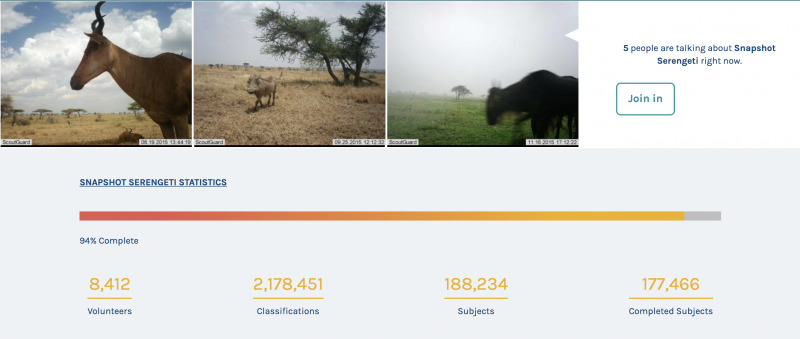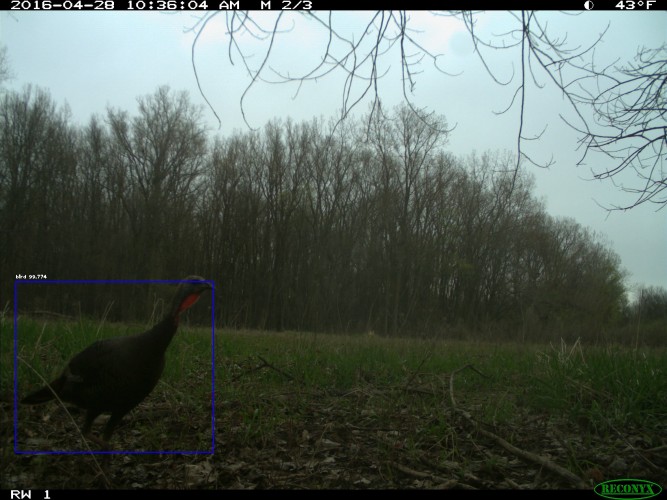Over the course of this semester, most of my work at the Shapiro Design Lab has centered around the implementation of machine learning in furthering citizen science projects. My time has been spent applying cutting edge techniques to solve at-scale problems that these projects face. In order to accomplish this goal, we have worked to build new utility into a project on the Zooniverse platform. Zooniverse is an online website that allows the public to volunteer their time and energy to help progress scientific research projects. From their website:
The Zooniverse is the world’s largest and most popular platform for people-powered research. This research is made possible by volunteers — hundreds of thousands of people around the world who come together to assist professional researchers. Our goal is to enable research that would not be possible, or practical, otherwise. Zooniverse research results in new discoveries, datasets useful to the wider research community, and many publications.
At its core, Zooniverse allows scientists to leverage the power of people to solve problems that they could not otherwise. What our team aimed to do over the course of this year, is apply machine learning to a Zooniverse project in order to allow scientists and volunteers, to make even more progress than currently possible.

The front page of the Michigan ZoomIN Zooniverse project
We sought to apply computer vision’s convolutional neural network to create a program that automates the identification of animals in pictures. This project, Michigan ZoomIn, requires volunteers to scan through thousands of pictures from wildlife camera traps placed around the state and identify any and all animals within them. In order to help expedite this process, our team worked to create a program that could identify the false positive pictures. False positives were likely caused by wind blowing and result in thousands of pictures that contain no animals. These are pictures that can be daunting for volunteers to classify while working through the images.

Screenshot of the Snapshot Safari Zooniverse project
Our team researched multiple different approaches to this problem and ultimately leveraged multiple resources in order to create pathways to solutions. Another program on the Zooniverse platform, Snapshot Safari used a complex convolutional neural network to identify animals algorithmically, which has enabled the project to classify millions of photos. We leveraged a variant of this program to adapt a program suitable to our needs. We also leveraged the power of ImageAI, an open source package that transforms cutting edge deep learning into a few lines of code. Through investing in multiple approaches, we were able to address different aspects of the problem at hand, in different ways.

Turkey identified by ImageAI
Ultimately, we were able to work through this very complex problem and provide pathways to triage the number of images that need to be classified. ImageAI serves as a suitable method of finding false positives and the work done to implement a Snapshot Safari approach to Michigan ZoomIn proves to be exciting and continually useful in identifying animals such as deer, which dominate the dataset. We are optimistic about the continued use of machine learning to further scientist’s abilities to research the natural world and make Zooniverse volunteers’ work both easier, and more exciting.